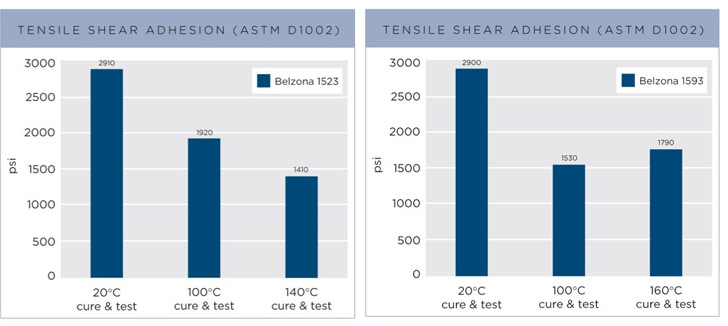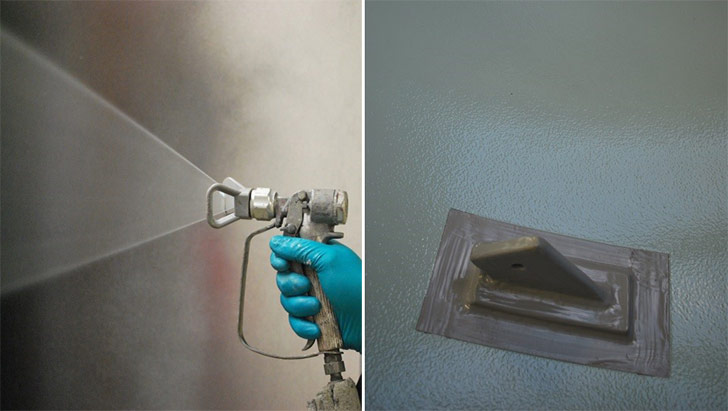The OGM Interactive Edition - Summer 2023 - Read Now!
View Past IssuesMolten sulfur is present in an ever widening range of industries and liquid sulfur storage tanks are used worldwide in crude oil refineries and natural gas plants to store liquid sulfur in very large volumes. Sulfur storage tanks are most commonly utilised as part of the Gas Treating System in sour crude oil refineries and gas sweetening facilities to temporarily store liquid sulfur produced in the sulfur recovery plant. These tanks are usually field erected and most commonly constructed of carbon steel.
Even though in recent years there has been significant progress with regards to the mechanical design of sulfur storage tanks, they are still plagued with corrosion issues and internal corrosion is considered to be the main cause of longevity and safety issues. Unlike external corrosion that can be easily identified, internal corrosion is out of sight and can therefore go unnoticed, causing catastrophic consequences. As a result of internal corrosion, sulfur storage tank service life has been reported to be as low as 5 years, although general storage tanks demonstrate a life of 30 years.
Sulfur storage tank failures cannot not only lead to loss of revenue and increased costs through downtime and replacement, but can also have a critical human health and environmental impact. Due to the combustible and toxic nature of sulfur, leaking sulfur tanks can be a significant source of environmental pollution to soil, groundwater, streams and lakes, resulting in contamination of drinking water. In addition, fire, explosion and inhalation of dangerous vapors present further critical concerns. Such scenarios may result in asset owners facing strict financial penalties from environmental regulatory institutions and as a result, damage their reputation on a local and international level.
The corrosion mechanisms vary according to the design and service conditions, but the most common cause for internal corrosion is the deposition of solid sulfur on the interior surfaces of the tank together with the presence of liquid water. The combination of these two components creates the phenomenon of wet sulfur corrosion that can cause severe attack to the carbon steel, especially when the hydrogen sulfide (H2S) concentration levels are high.
In order to keep the sulfur in a liquid state, the storage tanks are heated at a temperature between 257°F (125°C) and 293˚F (145˚C). Insufficient heating and external climatic conditions, in combination with missing insulation will cause temperature variations within the tank. Failure to maintain the desired temperature at the steel surfaces in the vapor space of the tank will lead to the solidification of the sulfur fog. The concentration of solid sulfur at the interior side walls, the roof and the vent nozzles will then cause severe corrosion that will propagate in depth and length.
After solidifying on the surface, the sulfur will act as an insulator contributing to further cooling of the surfaces. As the temperature continues to fall, traces of condensed water, formed by oxidation of hydrogen sulfide, will react with the solid sulfur and the iron from the tank walls, creating the ideal environment for the formation of iron oxide (Fe2O3) and iron sulfide (FeS) that further accelerate corrosion.
When the tank is in an anaerobic condition, the iron sulfide will not cause any hazards. However, when the tanks are opened to the atmosphere for inspection, cleanout and maintenance the iron sulfide, being a pyrophoric material, can spontaneously combust in the presence of oxygen, igniting a sulfur fire or an explosion.
Despite the fact that there are fabrication codes for the construction of this type of tank, these codes do not include sufficient mitigation for corrosion formation. Therefore, sulfur tank corrosion problems remain unsolved and corrosion control and mitigation measures are left with the operator of the tank.
High Temperature Protective Linings
Field experience has shown that the corrosion mechanisms and conditions can be minimised or eliminated by employing protective internal linings. To ensure a successful outcome, the protective materials should demonstrate outstanding chemical resistance against direct exposure to acidic conditions at high temperatures.
The first step of Belzona’s high temperature lining research project was the introduction of hand applied Belzona 1591 (Ceramic XHT) in 1998, and spray applied Belzona 1521 (HTS1) in 1999, following a successful field trial program. Over the following 16 years, Belzona’s R&D department analysed data from the field and researched innovative technologies and filler systems that could enhance material characteristics and in-service performance that would allow for the coating to resist elevated temperatures, but at the same time, remain flexible to sufficiently minimise the risk of cracking. This research has culminated in the introduction of next generation high temperature vessel linings in March 2014, hand applied Belzona 1593 and spray applied Belzona 1523.
According to Belzona’s Chief R&D Chemist, Richard Collett, “Belzona 1523 and Belzona 1593 are the result of 20 years experience in formulating high temperature linings, starting in 1994. These linings are based on a combination of several ‘state of the art’ technologies and I believe they are our best high temperature linings yet.”
Enhanced Chemical Performance – Increased Flexibility
Belzona 1523 and Belzona 1593 epoxy linings are designed to provide long-term corrosion and chemical resistance to equipment operating in continuous immersion at temperatures up to 140°C and 160°C, respectively. These two-part materials consist of an epoxy novolac base and a polyamine solidifier that, when mixed and cured, produce a very tightly cross-linked density.
The lining’s network is additionally supplemented by a novel secondary cross-linking mechanism initiated at temperatures above 90°C that further increases the cross-link density of the polymer matrix, making it even more difficult for the attacking reactive molecules to permeate through the film. Consequently, the materials demonstrate excellent resistance to liquid sulfur, sulfur dioxide (SO2) and hydrogen sulfide (H2S), as well as to the small amount of sulfuric acid (H2SO4) that may be present in a sulfur storage tank.
The high cross-link density required for coatings to achieve their high temperature immersion resistance can make conventional materials rigid and susceptible to cracking during thermal cycling and substrate flexing. Belzona 1523 and Belzona 1593 overcome this by the incorporation of rubbery domains that offer flexibility and inhibit crack propagation.

Above left: Crack propagation on conventional lining materials, Above right: The rubbery domains incorporated to Belzona 1523 and Belzona 1593 inhibit crack propagation
Belzona 1523 and Belzona 1593 demonstrate excellent adhesion. Belzona 1523 exhibits a tensile strength of 13.7 MPa and elongation rate of 0.54% when cured and tested at 100°C, whilst Belzona 1593 exhibits a tensile strength of 11.2 MPa and elongation rate of 0.31% when cured and tested at 160°C. Since the materials can be deformed when under radial, circumferential and longitudinal stress, they preserve their integrity, move in sympathy with the substrate, reducing material ruptures, breaks and fissures.
It has been proven that during the application of solvent-based coatings, issues can arise due to solvent retention within the film. In this case, solvent can be trapped within the applied linings and eventually evaporate leaving behind a void, which can then be filled by the system fluids causing bubbling and blistering. This is not the case with Belzona 1523 and Belzona 1593 since they are solvent free and thus also environmentally friendly.

These next generation linings address an application issue previously experienced when applying a two coat system of high temperature linings – bypass the need for grit blasting between coats, provided the second coat is applied within a 24-hour overcoat window. In addition, the unique curing mechanism of Belzona 1523 and Belzona 1593 activated at ambient temperatures eliminates the need for separate post curing processes as the lining will post cure in service ensuring a faster turnaround.
High viscosity coatings are often over applied in an attempt to make the application easier and to improve the flow out, which can lead to over-thickness, and have large impacts on costs and, more importantly, on performance. Improved rheology in this case allows for a more uniform thickness to be achieved.
An important consideration for lining manufacturers is visual inspection during application. Dark coloured linings can make it very challenging due to poor lighting inside the vessel. Next generation linings have been formulated in light contrasting colours enabling quicker and more precise identification of potential problems at the application stage. They are also spark testable and with minimal bloom formation on the surface, eliminating false alarms due to surface tracking.

Above left: Belzona 1523 sprayed applied, above right: Belzona 1523 and Belzona 1593 completed application
As a response to the existing needs and anticipating the future demands of the sulphur storage tanks market, Belzona has introduced its new technologically advanced high temperature linings to minimise corrosion failures and ensure personnel protection. Having recognised the fact that linings can be a controlling factor in the sulfur tank’s service life, Belzona has contributed to their protection by basing the development of Belzona 1523 and Belzona 1593, on clever polymer technology that is also ideal for other oil and gas production equipment vessels such as separators, flare knock-out drums and evaporators operating at high temperatures.

Did you enjoy this article?